Taxidermy4Cash.com
Taxidermy in the UK
We are always very interested in Purchasing Victorian Taxidermy, please respond via this on-line form of what you have for sale. HERE
Taxidermy process for larger mammals.
Darwin Museum Moscow, text written by way of the personal experience of Kirill Nasedkin.
Aleksandr Fedorovich Kots, a founder of the Darwin museum, took an interest in the taxidermy from childhood. Being the gymnasia pupil, he learned to make taxidermy specimens.
In 1896, when A.F. Kots decided to establish the museum of evolutionary history, he met F.K. Lorenz (3), who owned a taxidermy workshop and was, as Kots wrote, "the qualified specialist in ornitology and excellent taxidermist".
At that time it was the best workshop in Moscow and even in Russia; regarding the quality of preparation of museum specimens it was comparable with the Word's company in America. The Lorenz's workshop made the specimens of wood-grouses, partridges, birds of prey, squirrels, hares, and bears. They were quickly bought up to replenish the biological collections of Russian museums and also to decorate offices in the mansions of wealthy persons. The craftsmen of this workshop became the first taxidermists in Russia who began to make biological groups, in which stuffed aminals and birds were naturally fitted into imitated pieces of nature.
Elephant
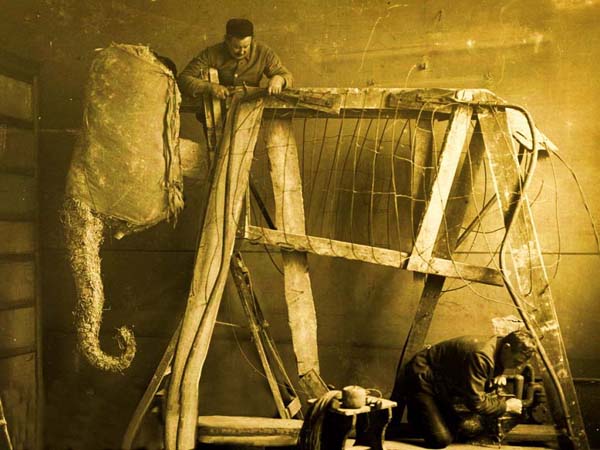
Early stages of the Elephant manikin. This is the Darwin Museum in Moscow.
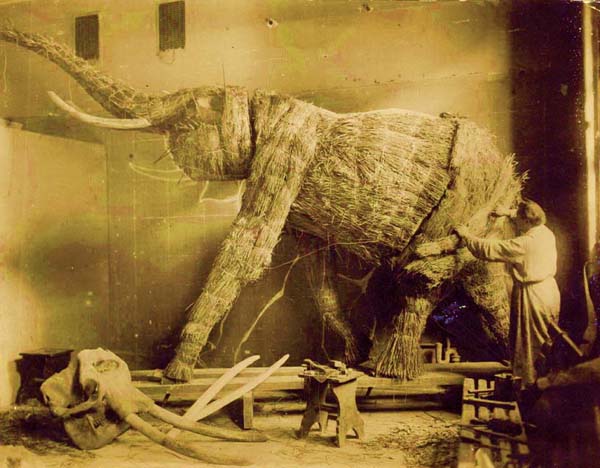
Early stages of the Elephant manikin. This is the Darwin Museum in Moscow.
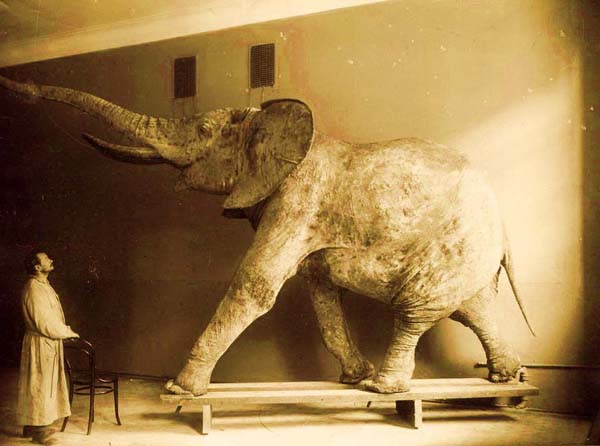
Elephant in final stages of completion. This is the Darwin Museum in Moscow.
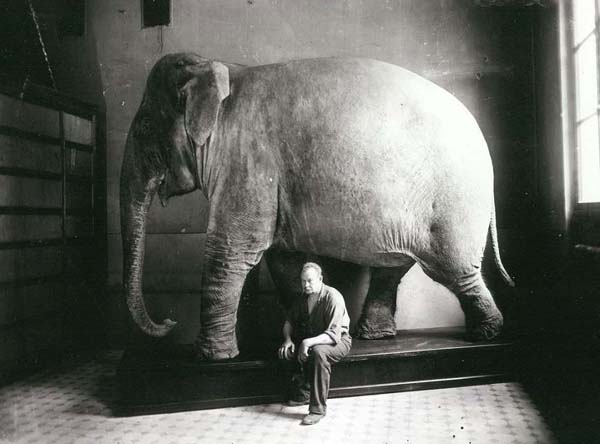
Elephant in final stages of completion. This is the Darwin Museum in Moscow.
It was this workshop, where A.F. Kots met Filipp Fedulov and persuaded him that he should come to work in the new museum. However, a short time later this meeting the World War I began, and Filipp Fedulov went to the front . When he came back, he came to the Darwin museum and worked there until he died.
Filipp Evtikhievich was the all-round craftsman. It was difficult to say exactly, which type of work was the best for him. He respectfully treated all animals, birds, and reptiles and, reproducing them as the taxidermy specimens, worried only about the problem of a reconciliation of the authenticity, artistry, and the scientific character of each of specimens he created.
He was the master, who made all specimens of large mammals. He made tens of bears, wolves, tigers, and lions.
Stages of the tiger stuffing.
He made two elephant specimens belonging to our museum. As you can see from the photo (below), in the beginning of XX century taxidermists used a usual hay to stuff animals; nevertheless, these specimens still present in our exposition
Tiger
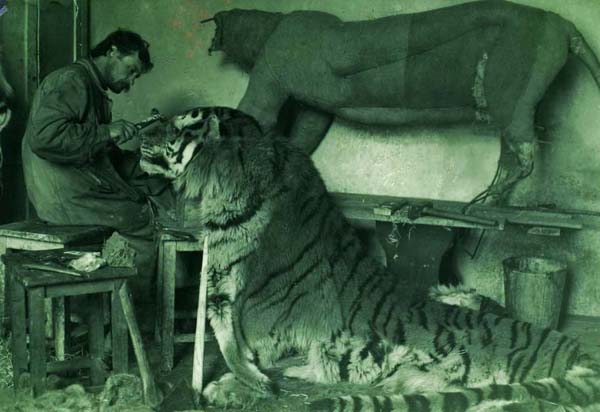
Tiger skull and skin with manakin in the background in final stages of completion. This is the Darwin Museum in Moscow.
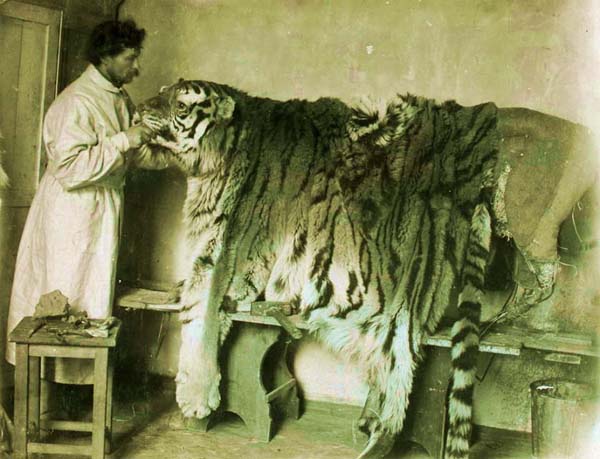
Tiger skull and skin with manakin in the background in final stages of completion. This is the Darwin Museum in Moscow.
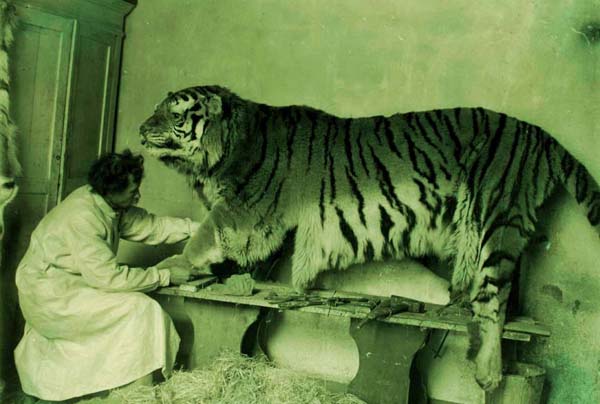
Tiger skull and skin with manakin in the background in final stages of completion. This is the Darwin Museum in Moscow.
After the Revolution in 1917, all taxidermy workshops in Moscow were closed down, but the Darwin museum did not suffer from this fact, because it had these two excellent taxidermists, who worked in the museum for many years.
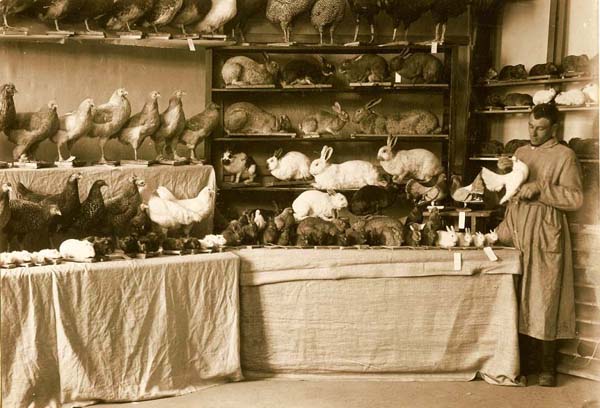
Dmitriy Feduluov with examples of domesticated animals. This is the Darwin Museum in Moscow.
After the Great Patriotic war, the number of qualified taxidermists in Russia sharply decreased. Over the long period of time there was only one good taxidermist in Moscow - Nikolai Konstantinovich Naz'mov (when he was 75, he worked in the Darwin museum for some time), and one excellent taxidermist of the old school - Zavadskiy - was in Leningrad. But none of these masters founded the taxidermy school. Therefore, the self-taught taxidermists worked in the museums of other cities and, when an opportunity occurred, they came to Moscow or Leningrad to work with the famous masters. However, the famous masters dead and in fact the Russian taxidermy school has not been found. Until now we do not have any institution that would train taxidermists.
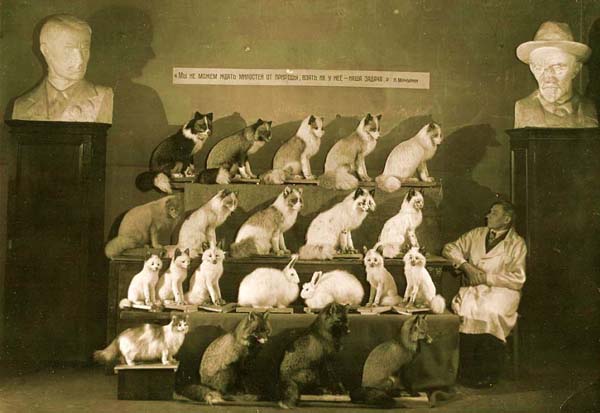
Dmitriy Feduluov with Abberation foxes. This is the Darwin Museum in Moscow.
![foxesdarwinmuseum [640x480].jpg](foxesdarwinmuseum [640x480].jpg)
Abberation foxes. This is the Darwin Museum in Moscow.
I work in the museum for more than 30 years, and all these years I hear from the Ministry of Culture, that we should found the taxidermy school, but the situation still remains unchanged. As regards the taxidermy workshops, now they appear not only in Moscow and St.-Petersburg, but also in other cities, but all of them are intended for the preparation of hunting trophies. The hunting exhibitions takes place in Moscow every year, and taxidermy workshops always participates there, but even on such exhibitions one can rarely see the well-made specimens. Usually such workshops produce stuffed heath-cocks and squirrels, carpets from the wolf or bear skins, and the heads of the wild boars, elks, and deers.
Taxidermy4Cash does not undertake taxidermy, rather we are collectors of
other people’s work, both current and historical we also offer web hosting,
a search engine submission service and increasingly one of the larger
article resource banks on the net. So if your keen to learn about Taxidermy
etc, then you know where to look.
We are always interested to here about new resource, if you feel a resource
should be listed here then please contact us.
|
ITEMS
WANTED. Please respond via this on-line form HERE
with a description of what you have for sale.
[HOMEPAGE]
Taxidermy Links.
Please double click on the Taxidermy link icon below.
Taxidermy
Links
|
|










![foxesdarwinmuseum [640x480].jpg](foxesdarwinmuseum [640x480].jpg)